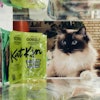
Petfood Industry magazine asked functional ingredient suppliers what they think will be “the next big thing” in functional pet food ingredients. Here’s what they had to say:
Customized and personalized nutrition
One significant trend functional ingredient suppliers believe will continue to shape pet food manufacturers’ needs in the future is customization — everything from more formulations catering to specific life stages or breeds to the very science of customizable pet food diets is on the table, according to experts.
“More specific life stage nutrition products that provide nutritional solutions to address the needs of each life stage — puppy, puppy plus, adolescence, adult, senior and senior plus [will be in demand],” said Brent Kirn, strategic account manager for DSM Nutritional Products. “[There will also be a] focus on more breed-specific nutritional needs.”
And it’s not just life stages themselves that will be a focus, but the health needs of those specific life stages.
“[There will be more] products to support health at specific life stages to result in longevity, living better for longer and healthy aging,” said Sarah-Jane Godfrey, technical marketing manager, pet food for DSM Nutritional Products UK. “For example, brain health, joint care, immune care or gut health.”
There’s also the growing idea that pet owners can customize their pets’ dinners themselves, with the aid of various food extras such as toppers or other meal enhancements.
“The ‘next big thing’ in functional pet food ingredients will be ordering them for ‘Do It Yourself’ pet food,” said Patrick Luchsinger, marketing manager, nutrition and pet food for Ingredion Inc. “Pet parents are pursuing a semi-homemade approach by enhancing the pet's meal with various additions, such as mix-ins, toppers, sauces and additional nutrients such as prebiotic fibers for digestive health. Pet food manufacturers are addressing this behavior by offering products that can be personalized or used in combination with other products.”
Then, there is the science behind pets, and what their bodies can tell us about how they need to be fed.
“As the sciences of nutrigenomics, proteomics, metabolomics and other ‘omics’ continue to advance, we are discovering the hidden secrets of nutrition,” said Juan Gomez, global director, companion animals for Alltech. “The ‘next big thing,’ I believe, is Functional Personalized Nutrition (FPN). The use of big data related to health biomarkers in pets’ DNA will determine the best use of ingredients in a diet such as marine oils, essential minerals and prebiotics.”
Novel ingredients as functional ingredients
Several ingredient suppliers said they believe the catalogue of functional ingredients will continue to grow as pet food manufacturers look for solutions to increasingly specific and complicated market demands.
“In the coming years, the functional ingredients market should see an important growth of superfoods,” said Caroline Ecoffard, health and nutrition marketing product manager for Diana Pet Food. “And in that dynamic segment, we specifically expect spices to take a prominent place. Spices’ high efficacy to address various human health issues is largely recognized — saffron, for instance, is well known to improve mobility and cognition. And if these ingredients are almost non-existent in pet food today, we can bet that manufacturers will soon seize this new opportunity to spice up pets’ lives!”
And moving even further into novel ingredient territory, there’s an alternative protein that has been getting some airtime in pet food lately: insects.
“There is lots of new research coming out all the time speaking to the functional benefits of insects,” said Victoria Leung, vice president of operations for Enterra Feed Corporation. “An example of this is the antimicrobial peptides found in insects, which can cause damage to bacteria, fungi and certain parasites and viruses.”
For the full companion article, "Pet health drives functional pet food ingredient trends,” published in the October 2018 issue of Petfood Industry magazine, see www.PetfoodIndustry.com/articles/7468.


















